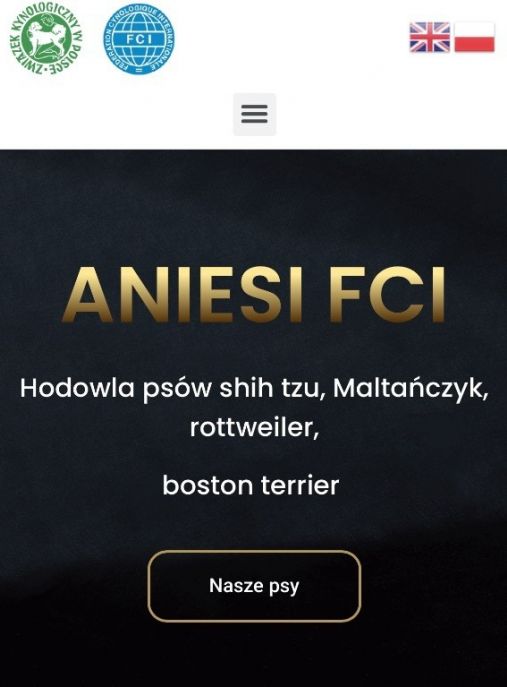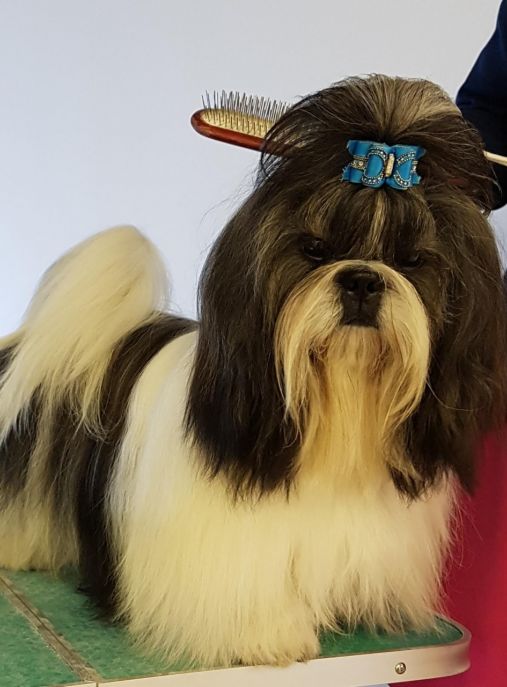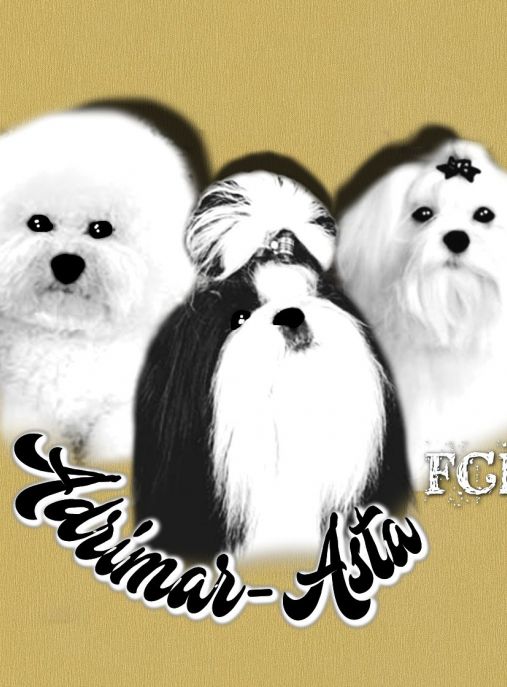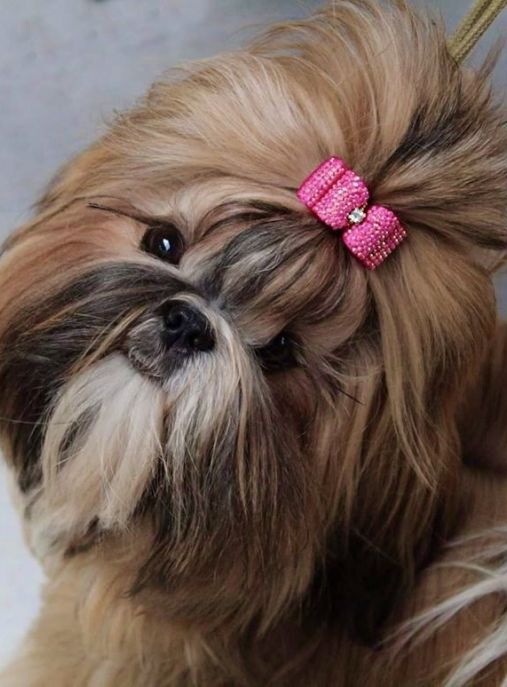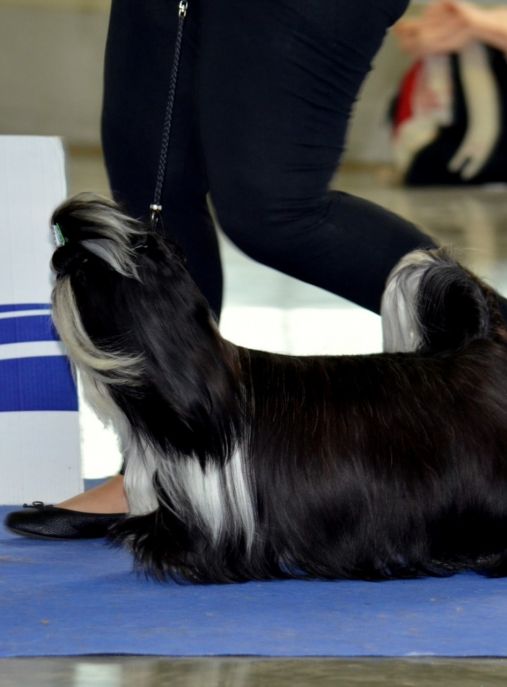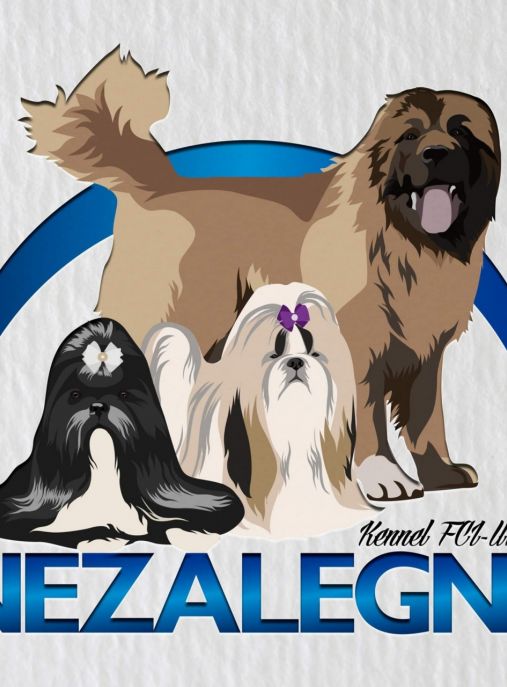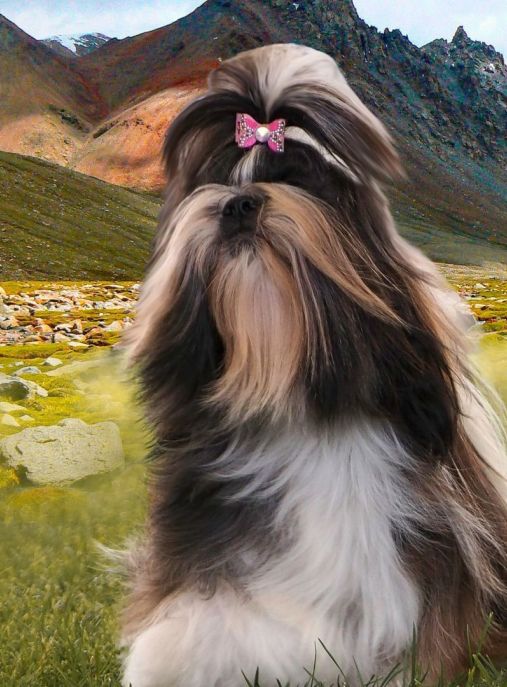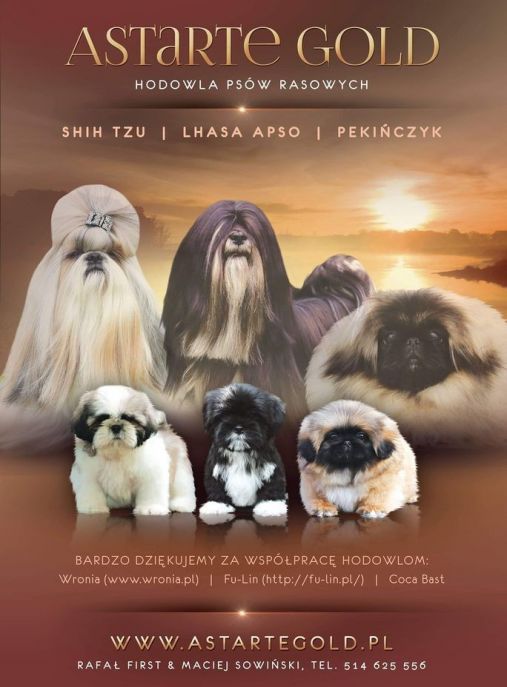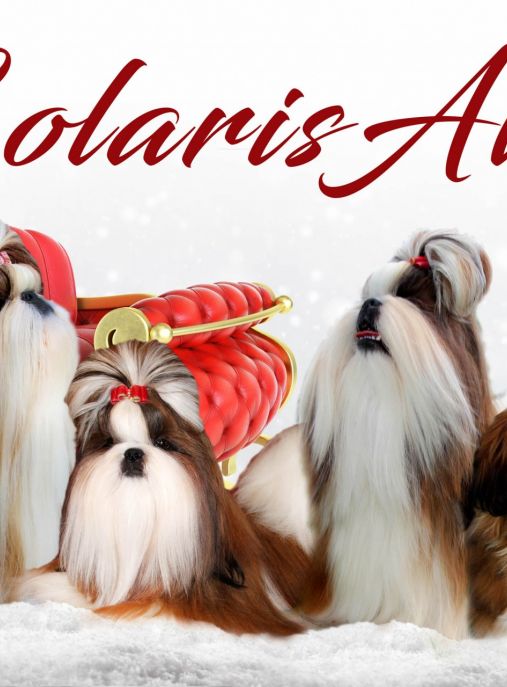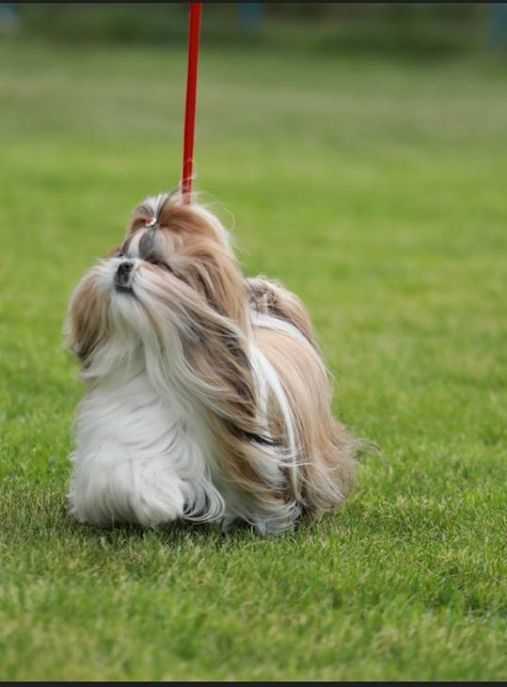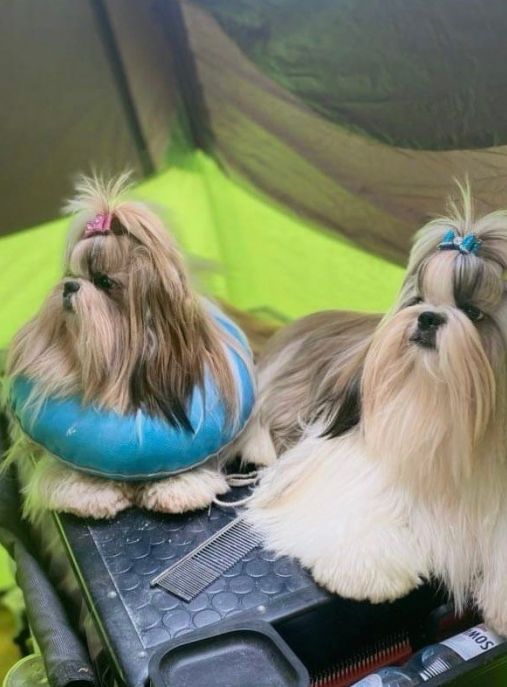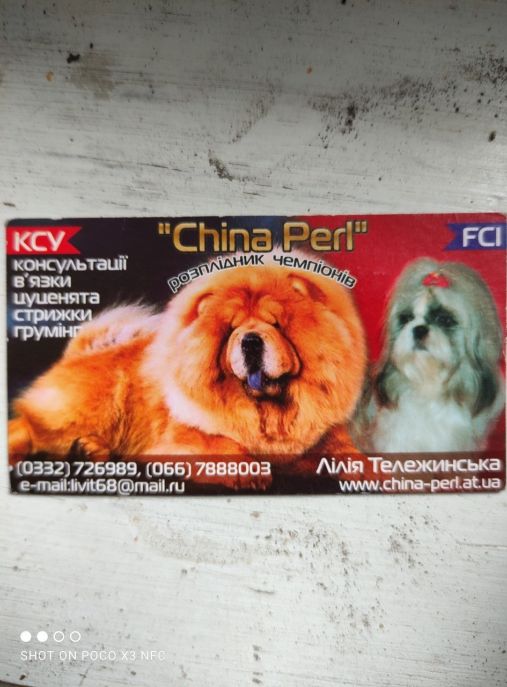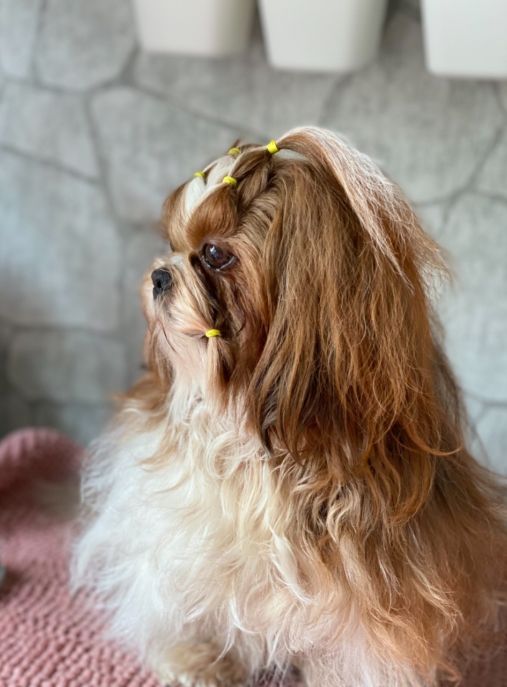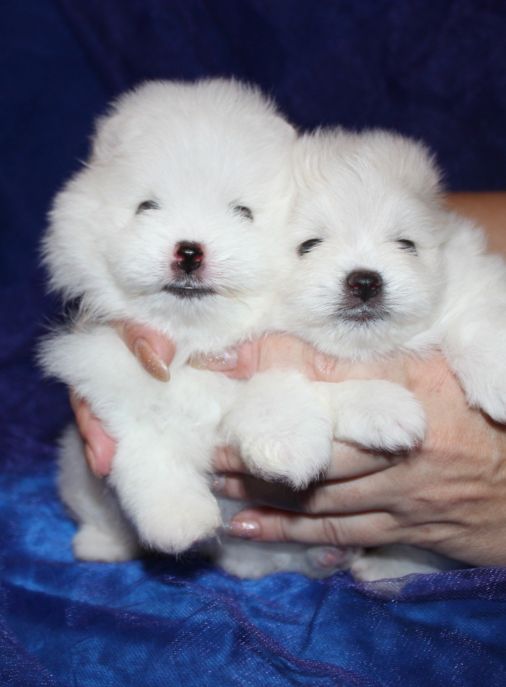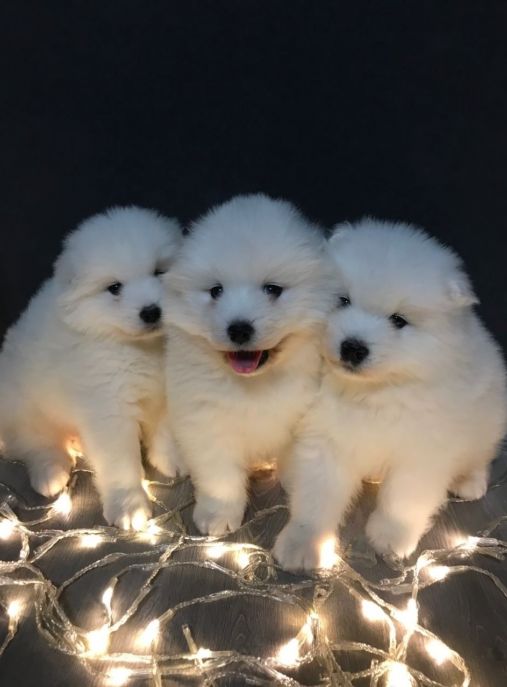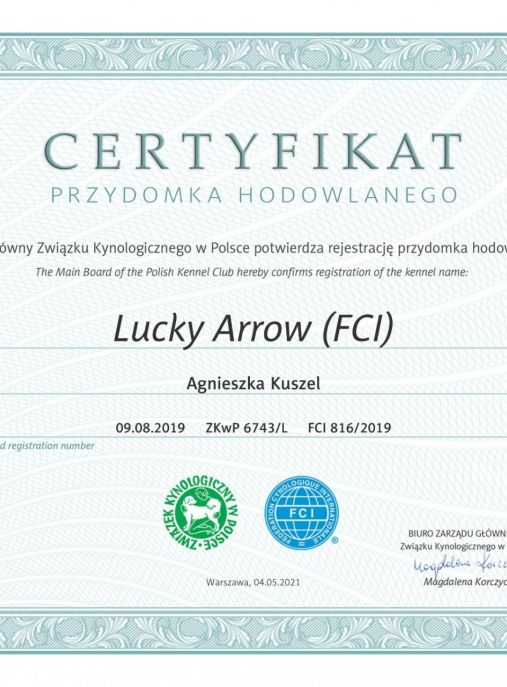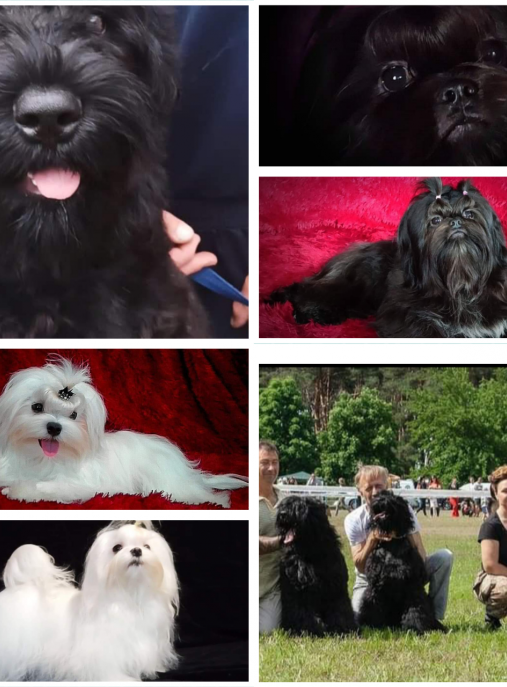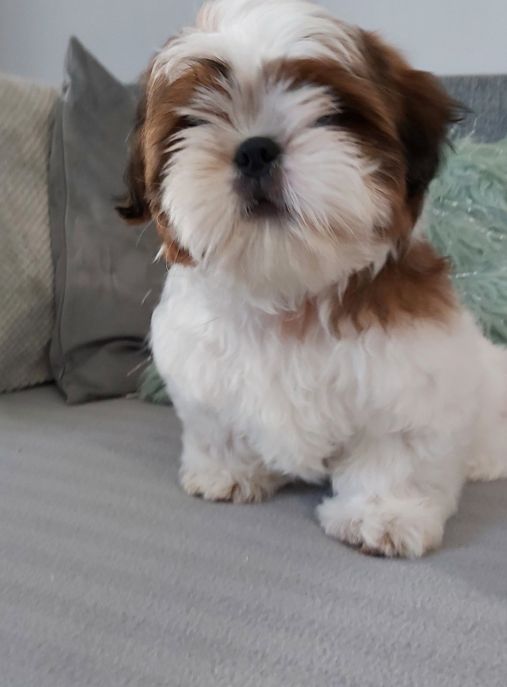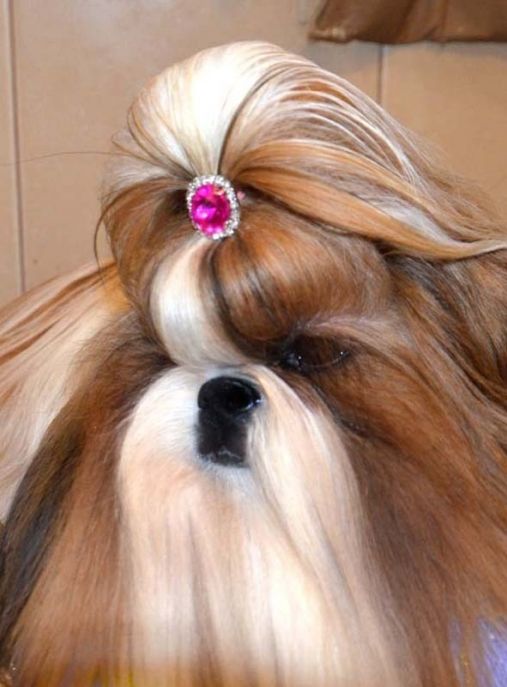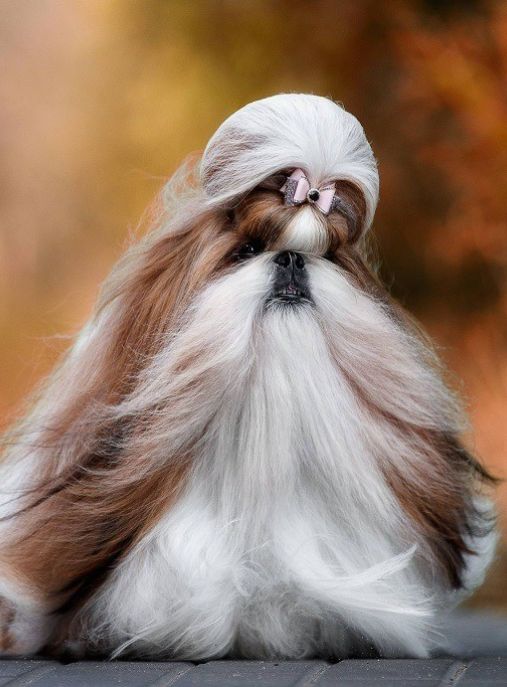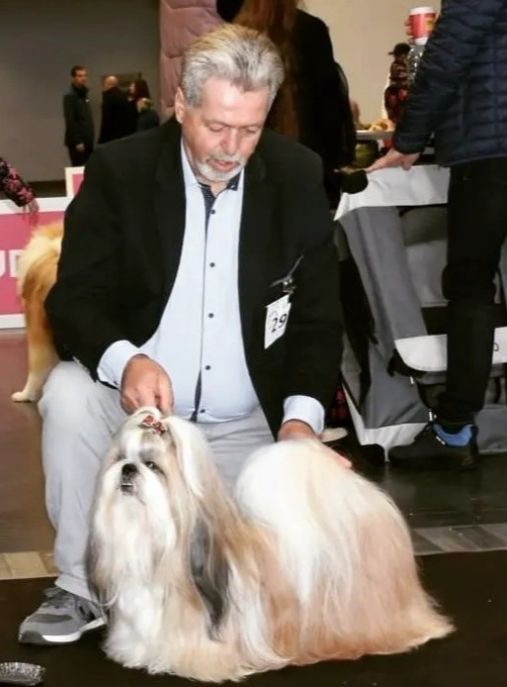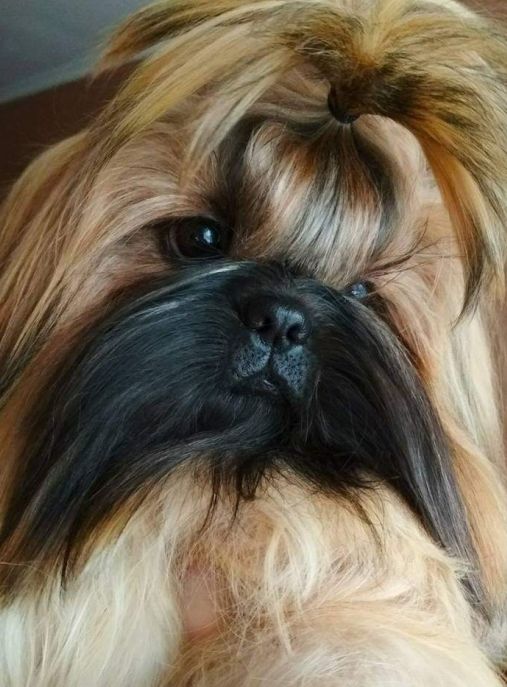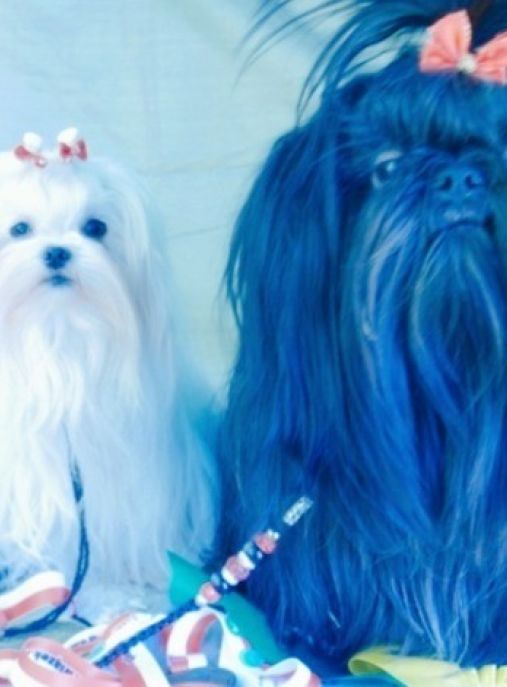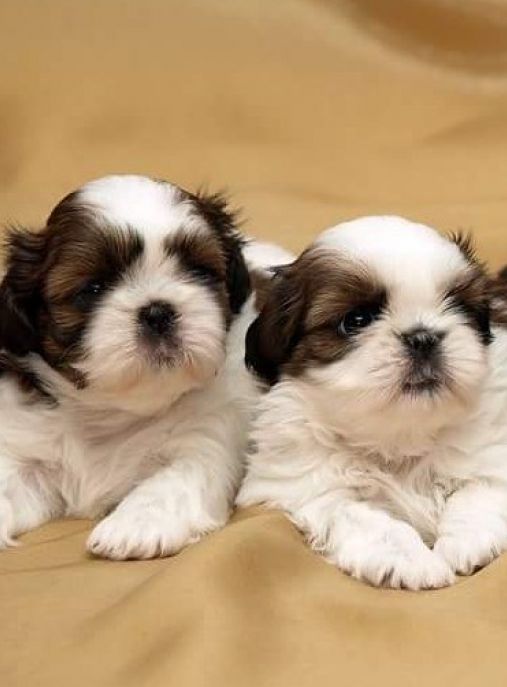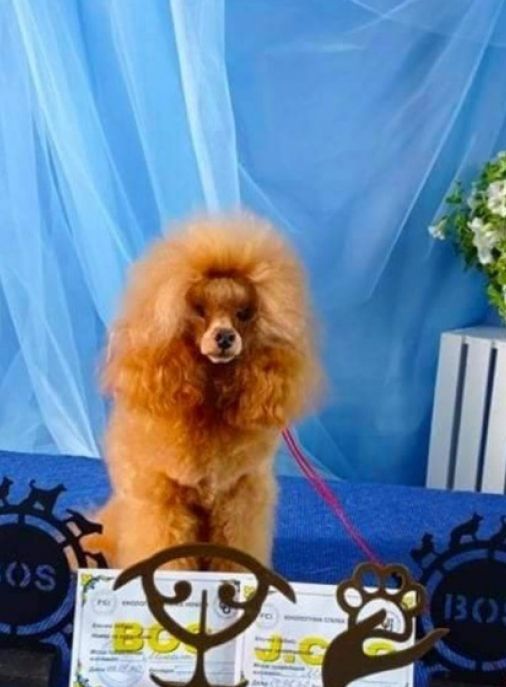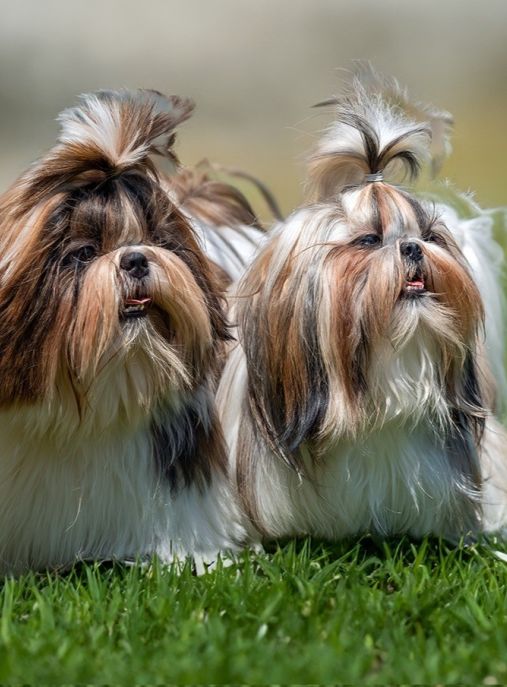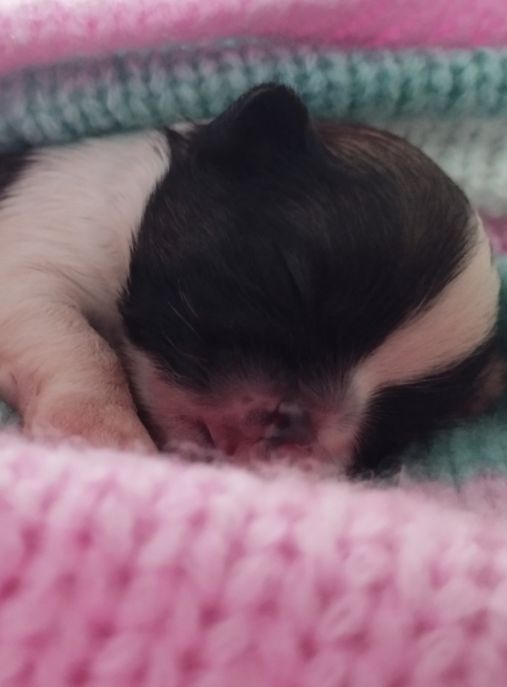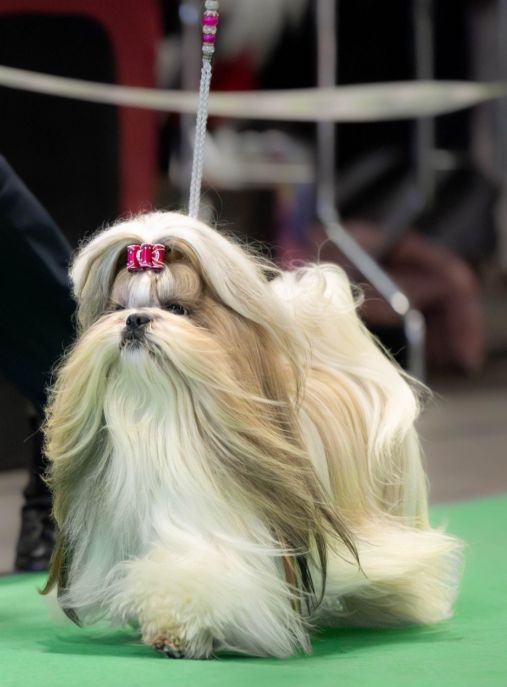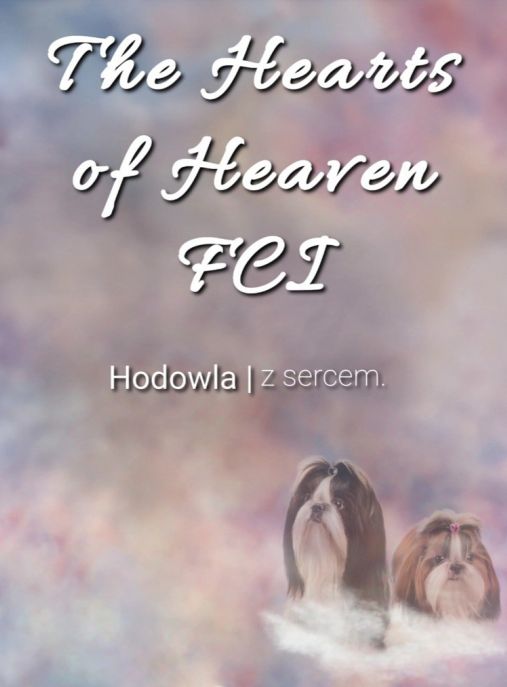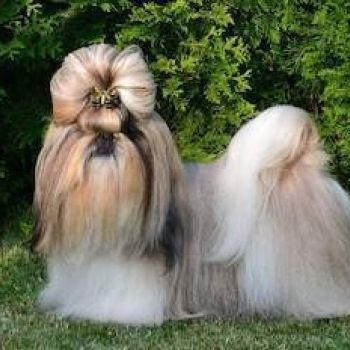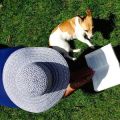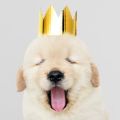The origin of the Shih Tzu is not fully known. It is known that 2000 years ago similar dogs lived in Tibet, where they guarded Buddhist temples. Their task was to move the prayer wheels and thus scare away evil spirits. This breed appeared at the court of the Chinese emperors of the Manchu dynasty in the 17th century. The dogs were a gift from the Dalai Lama, and a cross between lhassa apso and Pekingese. Thus, a shi-tze-kou (Tibetan lion dog), who was renamed Shih tzu, came to the court of the Emperor of China.
A philosophical look, a dignified posture and a long beard and mustache of the Shih Tzu are reminiscent of the Chinese mandarin.
The imperial court valued the smallest individuals that could be carried in the hands and even fit into the sleeves of their robes. It was only Empress Tzu Hsi who started a more regular breeding, although even after her death, random individuals were still mated. Until 1908, the Shih Tzu were bred mainly by the empresses of China. Shih Tzu were often presented as gifts to the greatest celebrities visiting the emperor's court. In the 20th century, the whole world got to know them.
In the 1930s, Shih Tzu found their way to England, where they were initially referred to as: "Chinese apso". After World War II, as a result of crossbreeding with lhassa apso, the Shih Tzu lost its original type for a while. However, in the 50's it was possible to return to it when in England a female Shih Tzu was mated with a black and white Pekingese. They were recognized as an independent breed in 1934, with a separate pedigree book from 1940 and the right to the championship from 1949.
- Dog's height: not more than 27 cm
- Dog's weight: 4.5 - 8 kg, ideal weight is 4.5 - 7.5 kg
- Life expectancy: approx. 14 years

The Shih Tzu is a robust, lively and energetic dog. It has a short muzzle and it always holds its head, which is profusely overgrown, proudly and high. It makes it look like a very confident dog. It is go-getter and brave. Shih Tzu is a small, cheerful brawler with a cute disposition. A characteristic feature of this breed is its inherent audacity and arrogance. This dog is independent and stubborn, and approaches strangers with distrust. It is a parlor dog in the full and good sense of the word. It is a family and companion dog, very clever and curious about the world. It learns all kinds of tricks and simple commands easily and willingly. It is a vigilant guard dog, which, with loud barking, will inform us about approaching guests. In relation to children, it is understanding and willing to play.
The ShisTzu is usually friendly towards other dogs. It shows no nervousness or aggression. However, some individuals can be aggressive and bark loudly at their four-legged mates. This breed requires careful socialization that we start from the very beginning. Its upbringing must be consistent, patient and calm. The Shih Tzu doesn't need a lot of activity but is not a typical domestic dog. It likes longer walks and training, e.g. on the agility track. It is very attached to the whole family and is a loving family member. This breed is also devoid of aggression.
Regardless of the company, the Shih Tzu behaves with dignity. It is full of energy and playful. It enjoys lounging on the couch as well as being at home with its chaperone. It is a cute dog with a confident character and a certain dose of arrogance at the same time.
Shih Tzu hair care is demanding. If we neglect the care of the hair of these beautiful and dignified dogs, it will become dull and brittle. Dogs of this breed should be bathed regularly, using various types of supplements. It is worth using, depending on the condition of the hair, various types of masks and oils. The dog should be combed daily to avoid felting. It is necessary to collect the hair from the forehead and fasten it with a rubber band so that the dog's eyes are exposed. You also need to keep your dog's eyes clean as they are the weak point of the Shih Tzu. For this purpose, special drops are used. Also regularly clean your dog's ear canals. If you don't have time and enthusiasm to keep your dog's coat in good condition, get a haircut every two months. In summer, it can be a "youthful" style haircut, because the Shih Tzu does not tolerate high temperatures.
Very profuse, long and straight hair can be of any color. The white blaze on the head and the white tip of the tail are appreciated - very desirable in spotted dogs.
The outer coat is long, dense, and it cannot be curly. The undercoat, on the other hand, is moderately abundant. A slightly wavy hair is allowed. The coat must not interfere with the eyesight or obstruct the dog's movement.
The most common diseases are:
- dislocation of the kneecap
- breathing problems
- cleft palate
- rolling up and turning the edges of the eyelids
- kidney disease
- ear infections
- eye problems
Shih Tzu tend to put extra pounds. The amount of food should be carefully controlled and treats should be avoided between meals. Dry foods that do not stain the dog's chin are convenient to use. It is best to divide the daily amount for an adult dog into two smaller portions. If you choose wet food or Barf, wash and dry your dog's hair on its mouth after each meal. What in more, supplement the Barf diet with vitamin and mineral supplements.
